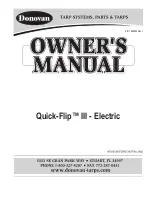
BRAKES 5B-45
L E A K A G E
With air system at maximum governor pres
sure and D D 3 brake actuators in the released
position, check drain slot and around the push rod
boot with a soapy solution to detect possible leak
age past the locking piston grommet.
Make and hold a service brake application
and again check the actuator drain slot for service
diaphragm leakage. Continue to hold,the service
application and coat around the service and park
ing diaphragm clamping rings with the soapy solu
tion to detect seal leakage.
Operate the actuator control valve to a park
ing position and check the exhaust port of a service
brake application to detect parking diaphragm
leakage. This parking diaphragm leakage detection
point could be the exhaust port of the foot brake
valve, quick release valve or relay valve. While
still in a parking position, the parking diaphragm
clamping ring should be coated with the soap solu
tion to detect seal leakage.
Should leakage be detected at the clamping
rings in either of the above tests, the clamping
ring nuts should be tightened evenly but only enough
to stop leakage.
If the D D 3 brake actuator does not function as
described, or leakage is excessive, it is recom
mended that it be repaired or replaced.
DD3 BRAKE ACTUATOR
REPLACEMENT
(Refer to Figure 17)
R E M O V A L
1.
Block and hold vehicle by some means
other than air brakes.
Figure
77— DD3
Brake Actuator System Installed at Rear Axle
2. With the brake actuators in the released
position, disconnect or completely remove air
brake hoses from parking and service ports of the
actuator.
3. At this point, exhaust air from parking
reservoir. This may be done by opening the drain
cock in the reservoir tank or by pulling out the
push-pull control valve button.
N O T E O F C A U T IO N : Air will be
exhausted out the line that was con
nected to the parking port, if the push-
pull control valve is operated. If this
line is not removed, it should be dis
connected in such a way that it will
not whip and cause damage as the air
exhausts.
4. As a safety precaution, the service system
should also be drained.
5. Disconnect air brake hose at actuator lock
port.
6 . Remove yoke pin cotter pin and knock out
yoke pin.
7. Remove mounting nuts, then actuator.
IN S T A L L A T IO N
IM P O R T A N T : D D 3 brake actuators must be
installed with the drain slot pointing down and to
wards the center line of the vehicle.
1. Mount actuator to mounting bracket and
tighten securely.
2. Fasten actuator push rod yoke to slack
adjuster with yoke pin. Lock yoke pin with cotter
pin. The angle formed by the push rod and slack
adjuster arm should be greater than 90 .
3. Connect air brake hoses to actuator taking
precautions that the proper hose is installed in
the correct port, and hoses are positioned for
proper movement during coach operation.
4. Adjust brakes,
5. Build up air pressure in system and test
operation of brakes.
6 . Test for leaks.
INVERSION VALVE DESCRIPTION
The inversion valve is used in combination
with the D D 3 brake actuators and push-pull con
trol valve in a parking and/or emergency system.
When the push-pull control valve is operated, the
inversion valve operates permitting air in the
parking reservoir to apply the brakes. The inver
sion valve also operates automatically when air
pressure drops to a predetermined pressure (40
Psi).
CHEVROLET SERIES 70 -80 H EAVY DUTY TRUCK SH O P M A N U A L
Summary of Contents for 70 1969 Series
Page 1: ...CHEVROLET HEAVY DUTY TRUCK SHOP MANUAL...
Page 3: ......
Page 11: ...LUBRICATION 0 4 CHEVROLET SERIES 70 80 HEAVY DUTY TRUCK SHOP MANUAL...
Page 27: ......
Page 119: ......
Page 361: ......
Page 371: ......
Page 427: ......
Page 443: ......
Page 451: ......
Page 493: ......
Page 499: ......
Page 549: ......
Page 555: ......
Page 609: ......
Page 715: ...am...
Page 745: ......
Page 910: ......
Page 913: ......







































